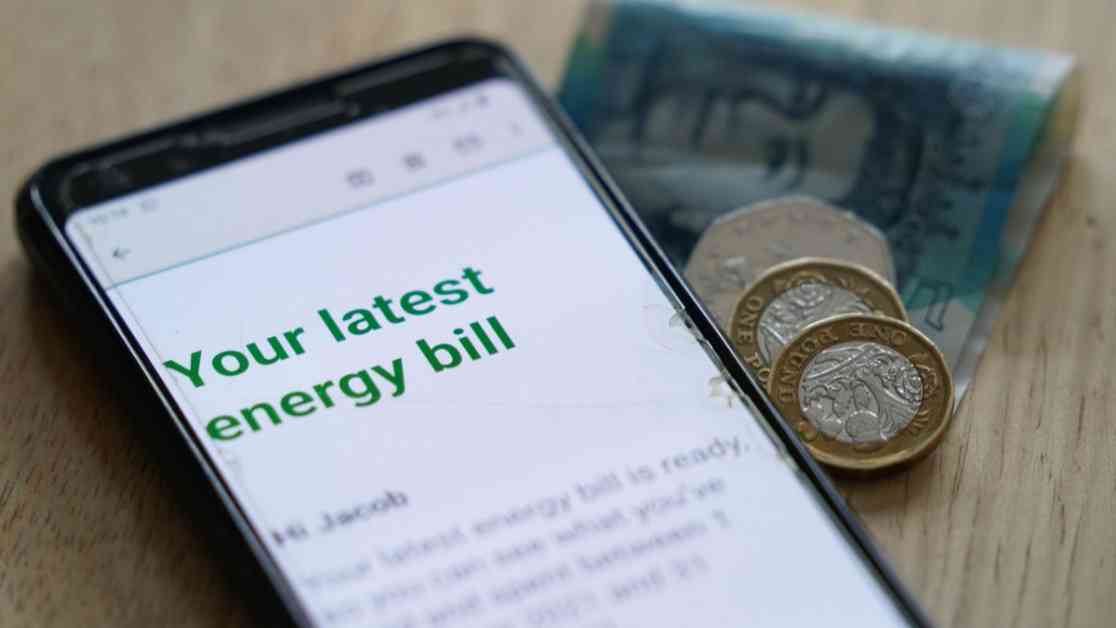Lock in Lower Energy Rates Below New Price Cap
Households across the UK are being encouraged to take action and potentially save on their energy bills by fixing their rate before the new price cap level comes into effect next week. Currently, five million people are locked into long-term energy plans and paying more than the current price cap of £1,568, with the average fixed tariff priced at £1,619 in July, according to the regulator, Ofgem. This means that those who have fixed their rates have been paying around £50 more per year.
However, with the new price cap level set to increase to £1,717 on 1 October, these individuals will now pay less than the new cap by an average of £102. This presents an opportunity for significant savings for those who take advantage of fixing their energy rates before the price cap changes.
Experts suggest that the 27 million people who are currently on standard variable tariffs, which are covered by the cap and therefore change when the cap changes, should consider exploring fixed-rate deals to potentially save on their energy costs. Ben Gallizzi, an energy expert at Uswitch.com, emphasized the importance of exploring fixed deals, stating, “Around 27 million households will see their energy prices rise from October, so now is a good time to look at what fixed deals are available.”
Understanding the Energy Price Cap
The energy price cap, set by Ofgem, establishes a maximum rate per unit of energy that can be charged to customers. This cap will rise by 10 per cent from 1 October compared to current prices. Introduced by the Government in January 2019, Ofgem is required to regularly review the cap and make adjustments as needed. The cap impacts the gas and electricity bills of 28 million households in Great Britain, excluding customers in Northern Ireland, where the sector operates under different regulations.
Choosing the Cheapest Deals
For those looking to secure the cheapest energy deals, it is essential to explore fixed-rate options available in the market. Currently, the most cost-effective fix is offered by Outfox the Market for £1,555 – £162 cheaper than the new price cap. The second cheapest fixed deal is provided by EDF Energy, priced at £1,568 for households with average usage, which is £149 less than the upcoming October price cap. Several other deals from various suppliers offer savings of more than £100, providing consumers with opportunities to reduce their energy costs significantly.
Gallizzi highlighted the importance of seizing the opportunity to lock in lower rates before potential price rises in January and uncertainties in long-term energy prices. By taking proactive steps to explore fixed-rate deals, consumers can potentially save on their energy bills and secure more stable pricing for the future.
Tips to Reduce Energy Bills
Gareth Kloet, spokesperson for Go.Compare Energy, shared valuable tips on ways individuals can cut down their energy bills effectively:
– Wash clothes at a lower temperature: Modern detergents are effective at washing clothes at lower temperatures, saving energy costs. Dropping the washing temperature from 40°C to 30°C or even 20°C could result in significant savings.
– Stop heat escaping: As temperatures drop, ensuring that heat does not escape through gaps in windows and doors is crucial. Simple measures like using thicker curtains and draught excluders can help retain heat within the house.
– Change cooking habits: Using lids on pans and batch cooking meals can reduce energy usage in the kitchen. Cooking multiple meals in one go in the oven can save both time and money on energy bills.
– Buy energy-efficient appliances: When replacing appliances, opt for energy-efficient options to save on energy costs in the long run. Selecting energy-efficient appliances, especially for frequently used items like kettles, can result in noticeable savings over time.
Taking proactive steps to reduce energy consumption and exploring fixed-rate energy deals can help households save money on their energy bills while ensuring stability in pricing amidst potential price fluctuations. By implementing energy-saving practices and choosing cost-effective energy plans, consumers can effectively manage their energy expenses and contribute to a more sustainable energy future.













